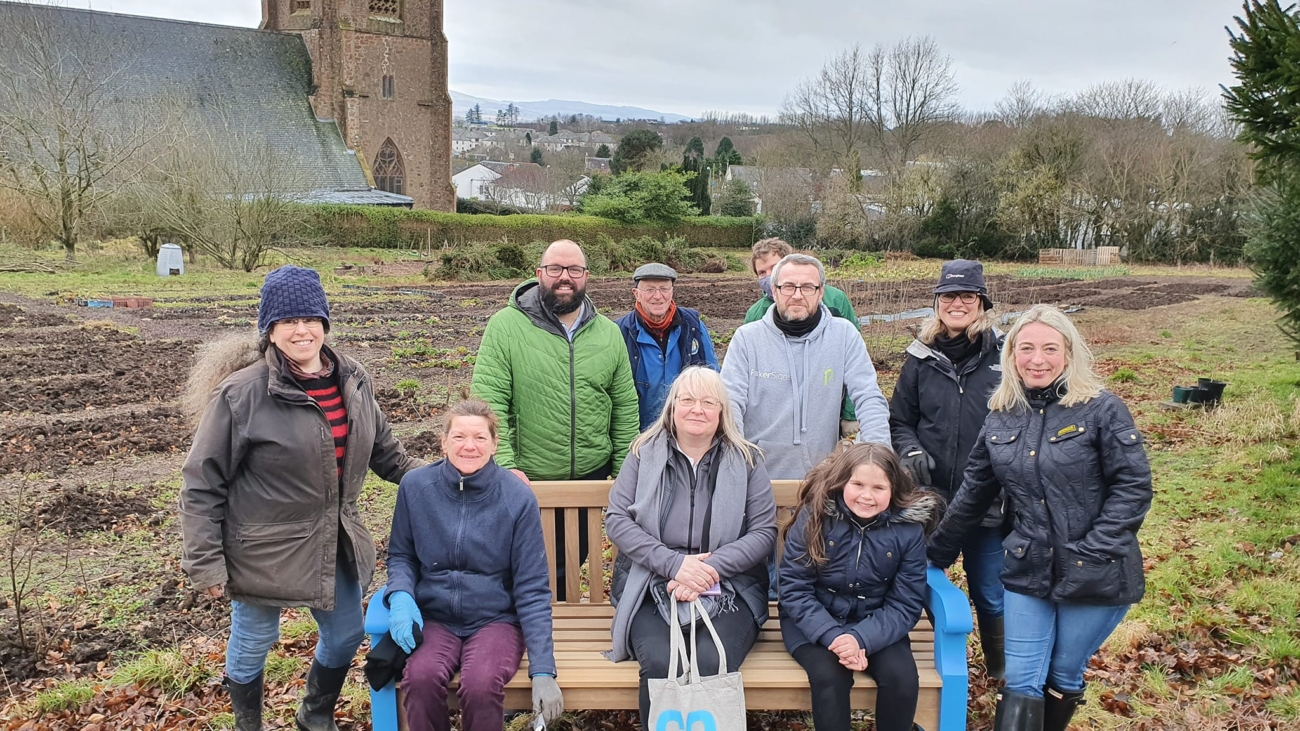The Story So far:
The Inverclyde Shed manages two growing spaces: a community garden at Shore Street, Gourock, established in 2019 and a larger market garden at Muirshiel Lane, Port Glasgow, established in 2001; our group was registered with OSCR in September 2019. The gardens are an addition to our community workshops and provide spaces for members & volunteers to meet, make, grow & share.
Shore Street historically would have been beach along the River Clyde, reclaimed to form part of the railway terminus in the 19th century and subsequently reclaimed as amenity ground with housing and green space. In 2017, the site and adjacent area were developed as a community growing space for a local schools & church group and a memorial garden for a late local artist, George Wyllie. The garden fell into disrepair until The Inverclyde Shed took over the running of it and brought it back to life, extending it, adding beds, vertical growing frames, a small greenhouse, shed, composting and orchards. The garden is fully self-reliant in compost, producing over 12 tons each year from grass & wood chip deliveries, local veg scrap collections, coffee ground donations from local cafes and on-site garden waste. This site is open to the public 24/7.
http://instagram.com/shorestreetgardens/
Land Agreement:
License to occupy council-owned land for community gardening; this license has been extended over the years to include a 40-tree orchard space and a small public park. The agreement is on a rolling month-by-month basis.
Muirshiel Lane was historically farmland and remained unbuilt as an industrial estate rose around it, mainly due to difficult levels/access road arrangements. The local Development Trust had used this growing space as a growing project for five years, but it became unused when core funding for the project ran out. At this point, The Inverclyde Shed, working in partnership with a local group Permalott, started to develop the site, investing in polytunnels, wild fruit hedgerows, willow, apple, cherry & plum orchards and extending the growing area by building new beds and importing compost to create ’no dig’ beds. Latterly, we have established composting stations on site with the aim of being fully self-reliant in compost by 2025, with an estimated 20 tons of compost made each year.
We have also set up an apiary near Muirshiel Lane, in a sheltered courtyard space between the derelict industrial warehouses.
Land Agreement:
An informal arrangement with a private owner to occupy some waste ground for community growing. The agreement is on a rolling month-by-month basis,
Advice to other groups:
You don’t always need an extended lease or ownership to start growing; sometimes, a looser and/or short-term rolling arrangement de-risks things for everyone to just get started. It can mean that the group has flexibility over its future whilst still investing time and resource into the site.







